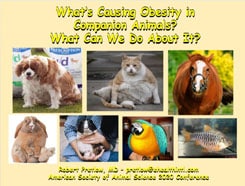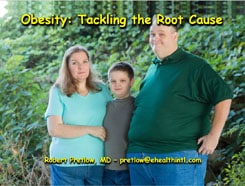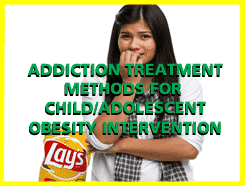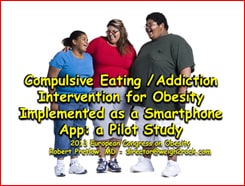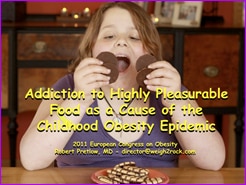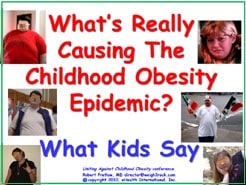A Questioned Technique in Obesity Treatment

There are solid reasons why any therapeutic modality for young people should have its claims verified by interested parties such as medical professionals, academic researchers, psychological therapists, insurers, institutions that promote or host the practitioners, and, of course, parents. It makes sense to assume that the basic act of looking into a treatment plan ought never to be construed as prima facie criticism, but should be regarded as prudent and reasonable information-gathering.
Now, we return to the previously mentioned controversial figure of Richard C. Schwartz, who worked in obscurity for decades, attempting to gain admission to the professional category of accepted innovators by formulating and practicing Internal Family Systems.
His concept is sometimes shortened to IFS, and sometimes called by names like “the therapy that can break you,” and has been cautioned against by journalists like Rachel Corbett. That writer began by quoting the IFS Institute literature, which explains how “each individual has multiple selves” that are known as parts, and each one is literally a separate and distinct personality. Each alter possesses its own identity, age, and emotional life.
Just like actual humans, these “parts” ought to be fairly judged as spiritual and sacred beings, and should never be mistaken for one-dimensional entities that are simply good, or only bad. Corbett explained,
Some parts were self-critics, others were repressed inner children. Schwartz came to call our most painful parts “exiles” who are kept at bay by “protectors,” another category that includes sub-personalities such as the perfectionist “managers” and impulsive “firefighters.”
Furthermore, it is not only traumatized people who own these inner inhabitants, but everyone, and even apparently healthy people can benefit from getting in touch and establishing lines of communication with the alters.
As Richard C. Schwartz struggled in obscurity to have his ideas recognized, another (unrelated) Schwartz, named Mark, and his wife Lori Galperin established the Castlewood Treatment Center in Missouri. This couple had been trained as therapists by the eminent Masters and Johnson Institute. They held the belief that one out of every three American women had been sexually abused in childhood, and moreover, that most eating disorders suffered by women of all ages were the direct result of such hostile and predatory interference during their formative years.
Around the turn of the century, Richard C. Schwartz was hired to work for Castlewood, where he treated inpatients and trained staff in the origins and implications of his beliefs about the “parts.”
As a professional, Schwartz found that a large proportion of the demand for treatment at Castlewood tended to come from teenagers with multiple personality disorders, post-traumatic stress disorder, and (as alert readers will not be surprised to learn) eating disorders. His work with inpatients concentrated on past trauma and how important it is to heal “the pain that underlies their eating disorders rather than just manage the symptoms.”
Some former patients came away with the impression that their therapists were basically so entrenched in the idea that sexual abuse and general homicidal intent manifested by adult family members had ruined their lives, all other possibilities were shunted aside. Looking back, many later questioned whether their childhood memories had been uncovered or, as came to seem more likely, implanted.
In 2014, when Schwartz had been training therapists and treating patients for years, a bestselling book, The Body Keeps the Score, by Bessel van der Kirk, included a chapter on his work and brought a great deal of attention to his ideas.
Footnote from the author of this blog
Back in the Sixties, I knew a female drug counselor whose figure resembled the trunk of a giant sequoia tree. As a child, Kris had learned the hard way “what can happen when a bad man takes you down.” Consequently, in adulthood, she did enough therapy to understand that obesity was her armor against a hostile world. Her goal was to never again be knocked over; to be so solid that if ever she was in a supine or prone position, it would be through her own choice.
Of course, “Understanding is the booby prize.” But although Kris was never able to achieve a normal weight, connecting that poundage to awareness of its protective function gave her great relief. The fat was not some random, inexplicable doom that had chosen her to persecute, but an active self-defense strategy, and the ability to frame it in that way made her inner life manageable.
(To be continued…)
Your responses and feedback are welcome!
Source: “The Therapy That Can Break You,” TheCut.com, 10/30/25
Image by anaterate/Pixabay










 FAQs and Media Requests:
FAQs and Media Requests: 


